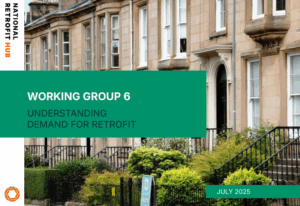This literature review brings together existing insight into what influences resident decision-making, highlighting the emotional, financial and practical barriers that prevent people from taking action.
The ‘Understanding Demand for Retrofit’ literature review brings together existing insight into what influences resident decision-making, highlighting the emotional, financial, and practical barriers that prevent people from taking action. It challenges the idea that demand is just about making a choice in the moment. Instead, it shows that a series of conditions must be in place before someone is ready to act.
Context behind the literature review
 Supported by The MCS Foundation, the review calls for a broader, more realistic understanding of how resident demand for home energy upgrades is formed and why it often fails to take hold.
Supported by The MCS Foundation, the review calls for a broader, more realistic understanding of how resident demand for home energy upgrades is formed and why it often fails to take hold.
Despite the clear benefits of retrofit, including improved comfort, better health and lower energy bills, uptake remains low. In 2024, fewer than 100,000 heat pumps were installed, well short of the Government’s 600,000-a-year target. And while many households could benefit, only two in five homeowners are considering improvements.
Developed by the our ‘Driving Uptake’ Working Group (WG6), the report introduces a new framework for understanding demand, identifying four key components that shape behaviour over time:
- AWARENESS – Recognising the need for change and knowing what support exists.
- ATTITUDE – How residents feel about retrofit and the organisations delivering it.
- ABILITY – Whether residents have the financial, practical or emotional means to act.
- APPROPRIATE TRIGGER POINT – The event or moment that prompts a decision.
This resource is published alongside a communications directory – a growing bank of resources to support stakeholder engagement throughout the retrofit journey. The directory brings together tools and insights to help you communicate retrofit effectively and meaningfully.
